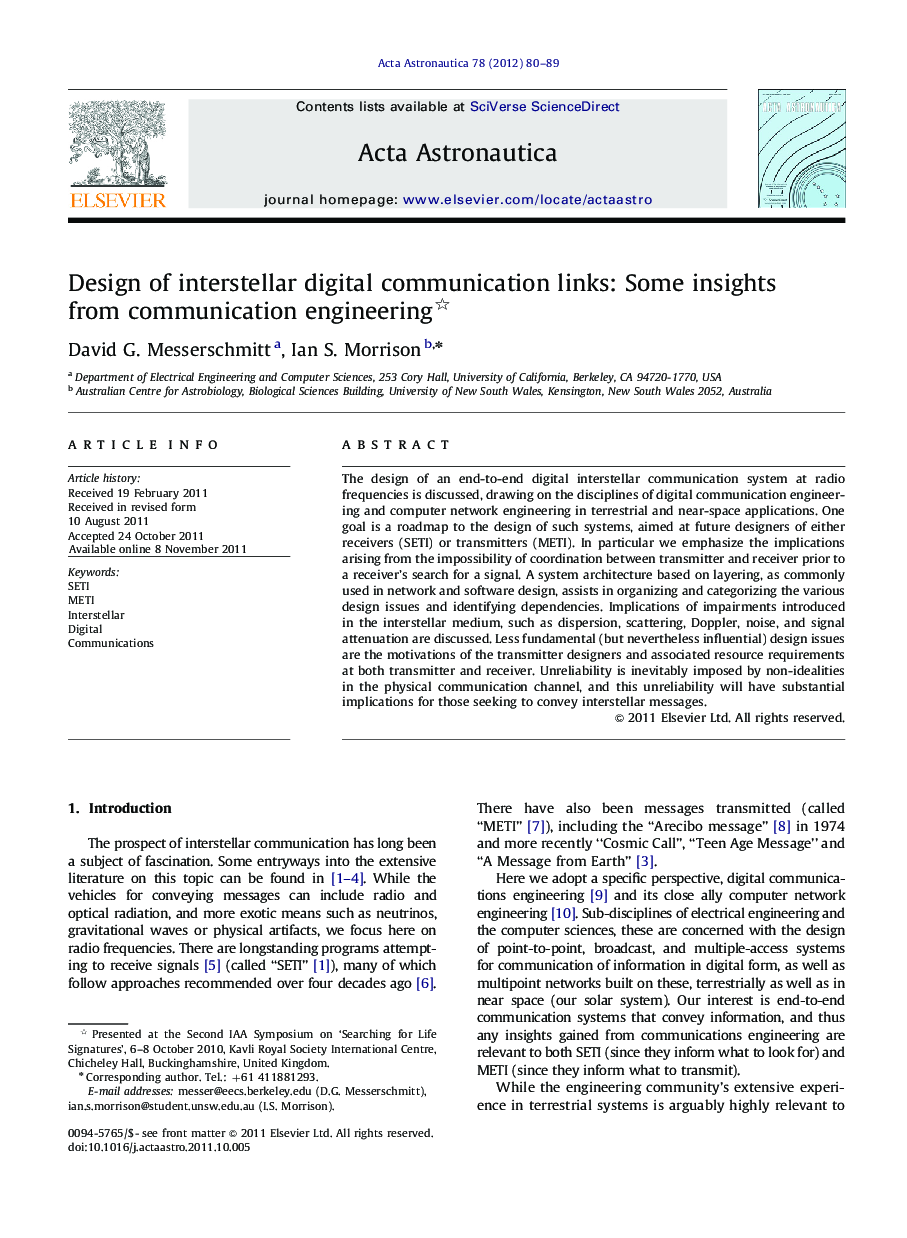| Article ID | Journal | Published Year | Pages | File Type |
|---|---|---|---|---|
| 1715280 | Acta Astronautica | 2012 | 10 Pages |
The design of an end-to-end digital interstellar communication system at radio frequencies is discussed, drawing on the disciplines of digital communication engineering and computer network engineering in terrestrial and near-space applications. One goal is a roadmap to the design of such systems, aimed at future designers of either receivers (SETI) or transmitters (METI). In particular we emphasize the implications arising from the impossibility of coordination between transmitter and receiver prior to a receiver's search for a signal. A system architecture based on layering, as commonly used in network and software design, assists in organizing and categorizing the various design issues and identifying dependencies. Implications of impairments introduced in the interstellar medium, such as dispersion, scattering, Doppler, noise, and signal attenuation are discussed. Less fundamental (but nevertheless influential) design issues are the motivations of the transmitter designers and associated resource requirements at both transmitter and receiver. Unreliability is inevitably imposed by non-idealities in the physical communication channel, and this unreliability will have substantial implications for those seeking to convey interstellar messages.
► Digital communication engineering principles applied to interstellar communication. ► Consider the impact of non-coordination between transmitter and receiver designs. ► Employ modularity and propose three-layer architecture: signal, reliability and message. ► Separate discovery from communication, and propose discovery within signal layer. ► Discuss the implications of the inevitable unreliability seen by the message layer.
